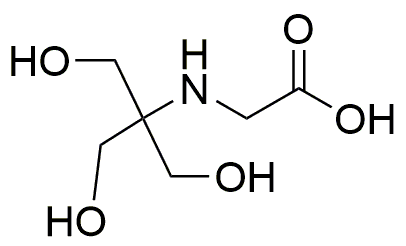Tricine is widely utilized in research focused on
- Biochemical Research: Tricine serves as a buffering agent in biochemical assays, particularly in protein electrophoresis. Its ability to maintain stable pH levels enhances the accuracy of experimental results.
- Cell Culture Media: In cell biology, Tricine is used in culture media to support the growth of various cell types. Its low toxicity makes it an excellent choice for maintaining healthy cell lines.
- Pharmaceutical Formulations: Tricine is incorporated into drug formulations to stabilize active ingredients, improving the efficacy and shelf-life of medications.
- Food Industry: As a food additive, Tricine can enhance the flavor profile and stability of certain products, making it valuable for food scientists and manufacturers.
- Environmental Applications: Tricine is used in environmental testing to buffer samples, ensuring accurate measurements of pollutants and other substances in water and soil samples.
General Information
Properties
Safety and Regulations
Applications
Tricine is widely utilized in research focused on
- Biochemical Research: Tricine serves as a buffering agent in biochemical assays, particularly in protein electrophoresis. Its ability to maintain stable pH levels enhances the accuracy of experimental results.
- Cell Culture Media: In cell biology, Tricine is used in culture media to support the growth of various cell types. Its low toxicity makes it an excellent choice for maintaining healthy cell lines.
- Pharmaceutical Formulations: Tricine is incorporated into drug formulations to stabilize active ingredients, improving the efficacy and shelf-life of medications.
- Food Industry: As a food additive, Tricine can enhance the flavor profile and stability of certain products, making it valuable for food scientists and manufacturers.
- Environmental Applications: Tricine is used in environmental testing to buffer samples, ensuring accurate measurements of pollutants and other substances in water and soil samples.
Documents
Safety Data Sheets (SDS)
The SDS provides comprehensive safety information on handling, storage, and disposal of the product.
Product Specification (PS)
The PS provides a comprehensive breakdown of the product’s properties, including chemical composition, physical state, purity, and storage requirements. It also details acceptable quality ranges and the product's intended applications.
Certificates of Analysis (COA)
Search for Certificates of Analysis (COA) by entering the products Lot Number. Lot and Batch Numbers can be found on a product’s label following the words ‘Lot’ or ‘Batch’.
*Catalog Number
*Lot Number
Certificates Of Origin (COO)
This COO confirms the country where the product was manufactured, and also details the materials and components used in it and whether it is derived from natural, synthetic, or other specific sources. This certificate may be required for customs, trade, and regulatory compliance.
*Catalog Number
*Lot Number
Safety Data Sheets (SDS)
The SDS provides comprehensive safety information on handling, storage, and disposal of the product.
DownloadProduct Specification (PS)
The PS provides a comprehensive breakdown of the product’s properties, including chemical composition, physical state, purity, and storage requirements. It also details acceptable quality ranges and the product's intended applications.
DownloadCertificates of Analysis (COA)
Search for Certificates of Analysis (COA) by entering the products Lot Number. Lot and Batch Numbers can be found on a product’s label following the words ‘Lot’ or ‘Batch’.
*Catalog Number
*Lot Number
Certificates Of Origin (COO)
This COO confirms the country where the product was manufactured, and also details the materials and components used in it and whether it is derived from natural, synthetic, or other specific sources. This certificate may be required for customs, trade, and regulatory compliance.


